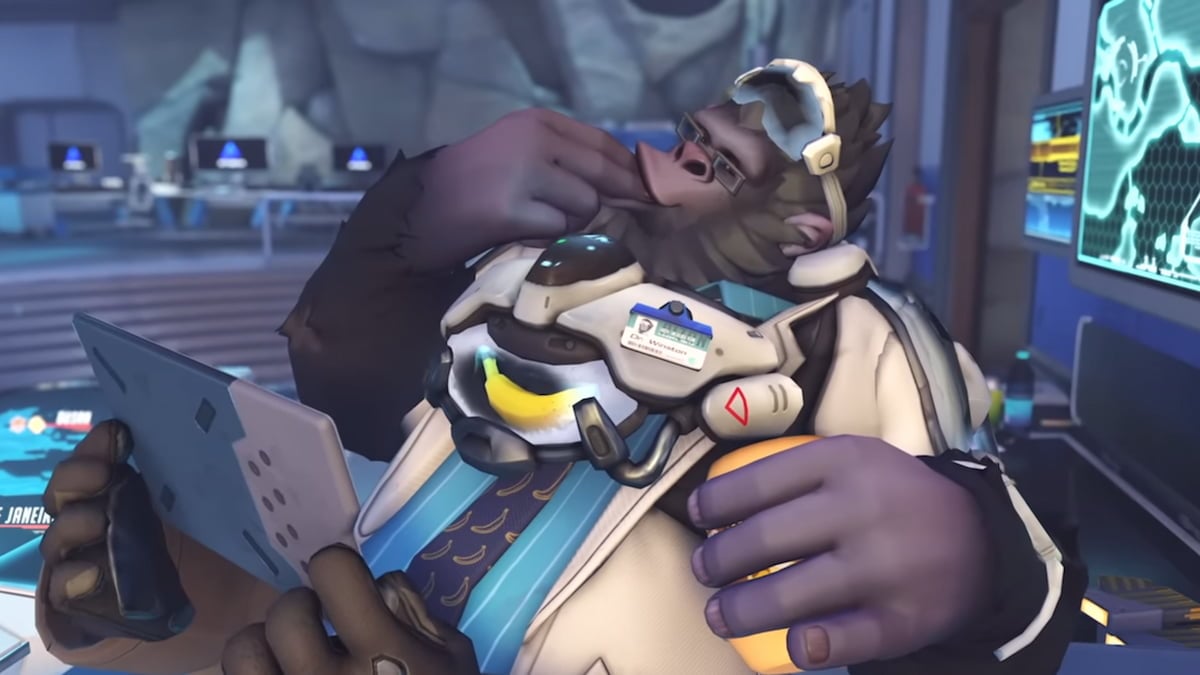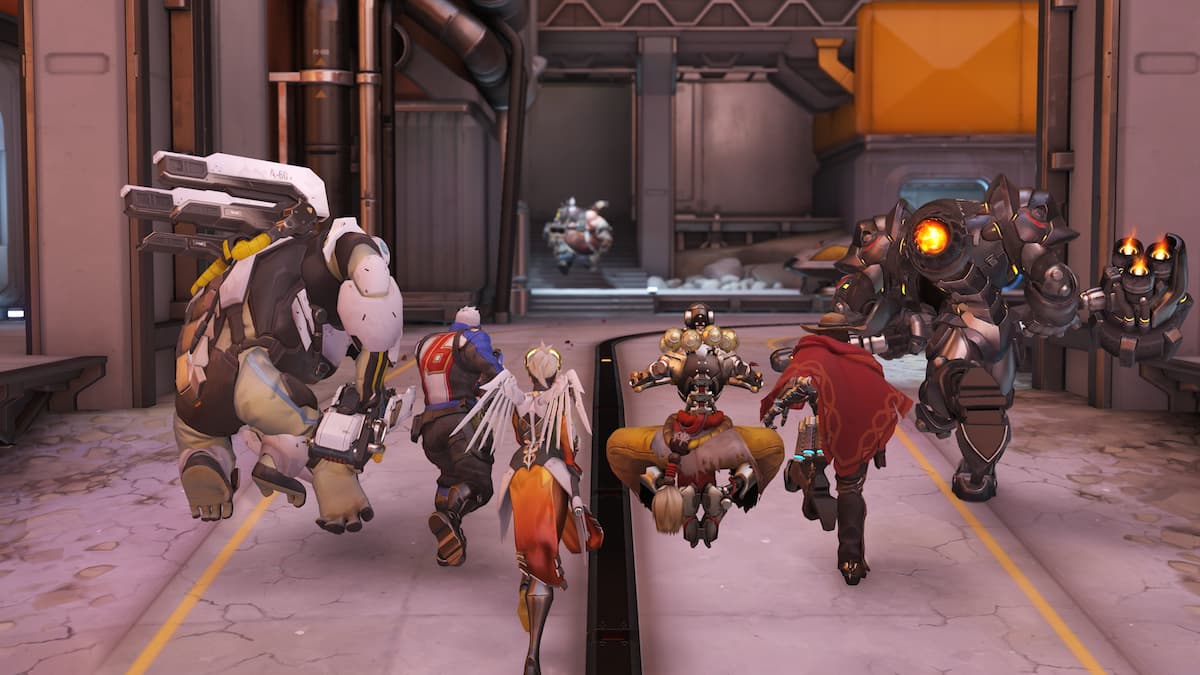As their inaugural season of APEX progresses, Overwatch team Meta Athena continually find new innovative strategies to surprise their foes. Whether it be an unusual team composition like their double sniper strategy, or a previously unexplored attack route, Meta Athena has consistently shocked us. Considering they are new additions to APEX, Meta is defying expectations and having a storybook run.
On Tuesday, Meta Athena combined a new composition and creative pathing for an incredible attack round on Eichenwalde against Afreeca Freecs Blue in the quarterfinals. The ingenuity is already impressive enough, however when the strategies Meta used are considered against what we know of their playstyle the true genius of the play can be seen.
First time Fling
Mei is a hero that sees frequent play as a utility-focused pick. Used for her zoning, crowd control, and stalling powers she excels on the defensive side. By specific rosters and in different metas, however, Mei has seen plenty of offensive play. But almost none by Meta Athena.
For the entire course of the group stage, Meta Athena played just one minute and 26 seconds of Mei. Naturally it was Libero, their jack of all trades, who picked her up. It was in their match against MVP Infinity at the end of Route 66. In his attempt to stall the payload he waded into the battle on Mei and promptly died, only to immediately swap to D.Va.
So while Mei is not an unheard-of pick, seeing Meta Athena put Libero back on her was certainly a surprise. The first use of Ice Wall was fairly standard. The team used it as a tool to block enemy sightlines and allow them to safely pass through the chokepoint created by the archway. It was this wall that caught our eye, however.
Teams utilizing Mei’s Ice Wall to boost players onto the high ground is nothing new. It is frequently seen on the defensive side of Temple of Anubis or Hanamura, to put heroes who lack vertical mobility into advantageous positions, such as Ana. But using Ice Wall to boost your entire team in such a map-breaking way is unheard of.
By collectively jumping the wall, Meta Athena reached an area of the map normally reserved for the second phase of Eichenwalde. This opened up the possibility of attacking from angles that normally only the defending team can approach from. To their credit, Afreeca Blue reacted incredibly quickly to the new tactic, matching the rotation to the upper floor of the building. But in the ensuing brawl they convincingly lost.
Meta Athena continued to use Mei’s Ice Wall for purposes other than zoning and in the streets phase of the map used another boost to negate Afreeca Blue’s defenders advantage.
Hoon uses his shield preemptively to attempt to build energy charge, as he often does. But once that barrier falls he is quickly taken down. Despite the early loss, the fact that Meta Athena so beautifully negated the positional advantage that Afreeca Blue held means they are still able to take the fight off the back of Changsik’s Reinhardt.
Strength to Strength
Obviously these plays look incredible because they worked, but it is entirely possible for neither boost to work out in the favor of Meta Athena. Especially when we match up Libero’s play with how we normally conceptualize Mei’s teamfight impact.
Normally as Mei, you are attempting to split the enemy team with your Ice Wall to gain a temporary numbers advantage. This is important to do because Mei as a DPS hero is a far less reliable source of damage. Instead, she excels at finding a vulnerable target, freezing them, and allowing her team to clean up the fight.
As we see in both clips above, however, Libero freezes none of the Afreeca players. And in the second wall boost we can see that he hits just a scant few icicles, with his only zoning wall coming well after the fight is already won. What this means is that Meta Athena is sacrificing raw teamfight power for the ability to play with an even position to their opponents.
When we consider what has historically been Meta Athena’s strength, it makes sense. Their standard line of play is to enable their frontline, especially Hoon on Zarya, to be their damage carries while Libero and Sayaplayer play a supportive DPS role. This is where we can begin to understand why these Mei wall boosts work so well with Meta Athena’s strengths.
For carry-minded Reinhardt and Zarya players the optimal range of engage is essentially point blank. And that is how Meta Athena typically plays, with Hoon and Changsik aggressively postured forward. The first two sections of Eichenwalde, however, are not conducive to that type of play. Attacking point A is largely a struggle to break through the archway choke point, while the streets phase becomes a battle over sightlines to and from the high ground.
In both instances it is often up to the offensive team’s DPS players to create openings due to the range the defense’s hitscan can stand at. Reinhardt and Zarya simply cannot reach their targets without exposing themselves or their allies. Both Mei wall boosts specifically put Meta Athena in situations where they could play the brawling style they so excel at, and nullify any sort of range disadvantage.
Not many teams would be capable of executing this sort of play as effectively as Meta Athena due to the strength of their frontline, which compensates for the lack of damage coming from Mei. These sort of specifically-tailored strategies that Meta Athena displayed in their series against Afreeca Blue make them a bigger threat to Kongdoo Panthera and LW Blue, the favorites to survive the quarterfinals, than many believe them to be.
As Volamel’s Prophecy Foretold
What made Meta Athena’s 3-1 victory over Afreeca Blue particularly worrying for their future opponents was the obvious increase in strategic diversity they displayed. They dropped just a single map, which meant they only got to choose one map, which was Eichenwalde. And it was evident from their play why they chose Eichenwalde.
But Meta Athena also broke free from their previously one dimensional focus of solely putting Hoon in a position to carry. The team proved they could give priority to Libero as he was a driving force for the team when he played Genji on Temple of Anubis and Hanzo on Dorado. But on the flip side, Libero proved he was still a team roleplayer on Eichenwalde with his Mei play.
Fortunately for Meta Athena Sayaplayer, Nus, and Kris form a consistent core for the stars to play around. As Meta Athena showcase new strategies and shifting team focuses, they are proving their versatility. It bodes well for their ability to upset their quarterfinal group and defeat either Kongdoo Panthera or LW Blue.
Those hypothetical victories are still no easy task. If Meta Athena was able to pull off the upset, however, their versatility would be a significant upside heading into the semifinals on a new patch with a new metagame. It would be a race to adapt, and out of the remaining six teams Meta Athena has shown the greatest strategic depth, which leads us to believe they could be the quickest to adapt.
The royal road is still within reach. What a story it would be.






Published: Mar 15, 2017 02:04 pm